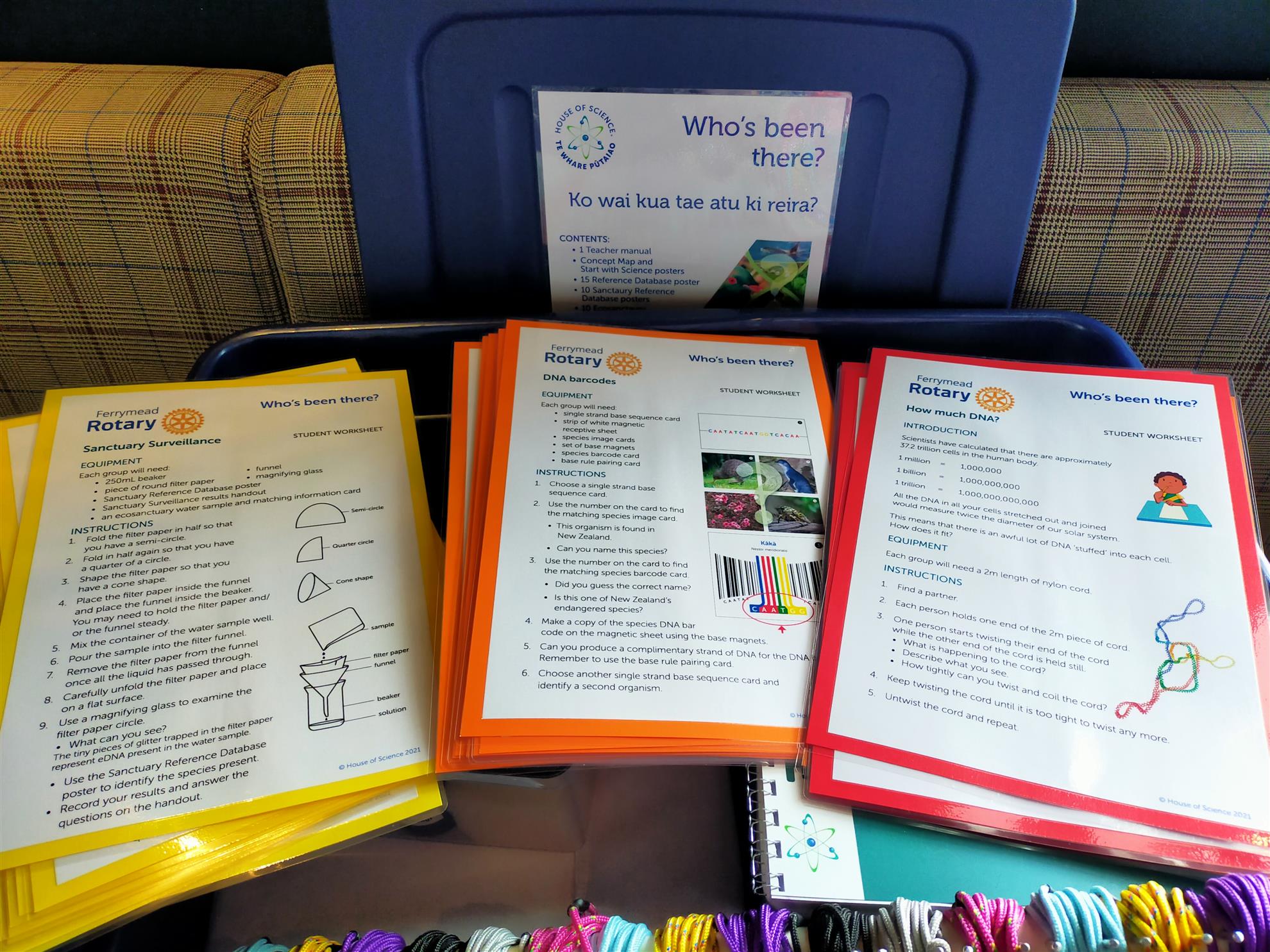Exploring what lives in their local, natural environment has become much easier for Bay Harbour kids. A new, education kit, specially designed to help teachers and students with such studies, is now accessible through Ferrymead Rotary.
The kit, which has been produced by the Christchurch House of Science, has been designed to make science study easier and more rewarding for both teachers and pupils. It sits alongside 42 other science kits available to Christchurch schools. Ferrymead Rotary has also supported the Bromley and Heathcote Valley primary schools’ use of kits this year.
The kit, which has been produced by the Christchurch House of Science, has been designed to make science study easier and more rewarding for both teachers and pupils. It sits alongside 42 other science kits available to Christchurch schools. Ferrymead Rotary has also supported the Bromley and Heathcote Valley primary schools’ use of kits this year.

Some of the contents of “Who’s been there” kit.
Neville Petrie, general manager of the Christchurch House of Science, says the kit has been designed for primary school children to explore and interpret their local environment. They can use the kit to go into playgrounds, streams and estuaries, and find out what animals, insects and plants are living there.
This kit, named ‘Who’s Been There?’, contains all the equipment needed to test and find out what animals are in an area. Given recent discoveries, children in the Bay Harbour area could aim to track down rats and possums. They can take samples, and send them to a laboratory to establish which animals are around.
Mr Petrie says the House of Science kits are designed to provide support for teachers so that they have confidence to teach science to their classes. They aim to raise scientific literacy by providing resources to children in primary and intermediate schools.
He says the science kit has models of DNA sequencing showing how a long strand of DNA coils into a small space. The children can establish how much DNA has been left and DNA barcodes for different species. The kit aims to provide a good understanding of DNA and some of the areas in which it can be used.

Stella Derham and Jason Prakash examine the DNA strand.